Composition profiles
Songs
Apart from teaching and playing concerts, Konstanty Kazimierz also showed a predilection for composing music. Though he had never studied composition, he was a pianist endowed with a musical imagination. He accompanied many performers and liked to join in the traditional salon music-making in Kiev, where singing, performances by well-known singers or presentations of songs setting texts by fashionable poets, generated the greatest interest. Konstanty Kazimierz demonstrated an uncommon talent also in this area. He composed songs for voice and piano to texts by well-known Russian poets such as Semyon Nadson, Alexei Apukhtin, Konstan tin Rocher, Leonid Andruson, and Alexander Pushkin. Ten such songs survive, divided into four opuses published in 1910–1914 by the powerful music editor G.I. Indzhishek, who catered for the needs of the Imperial Russian Musical Society from Kiev to Moscow and Baku. The first song, Mne Snilos Vechernoye Nebo, was a precedent in that it was printed under the Polish title Bezbrzeżna mi przestrzeń się śniła and signed “Polish words by Henryk Zelenay”. The translator was a Polish Protestant from the same family as the composer’s mother Maria Zelenay, wife to his late father Rodolph.
Despite the fact that Konstanty Kazimierz’s works were printed, time and history scat- tered them in various places in Russia, Ukraine, and worldwide. They are hard to find, and some of them are missing today. The songs are the most important. They belong to the genre of romance, lyrical or dramatic in expression, with a classical, symmetrical structure. They are steeped in the tradition of Russian romances, especially those which are sometimes called ‘urban’, akin to the simple, emotional songs of love and longing that were meant for amateur music-making in private parlours. Their deep roots go back to the poetics of Tchaikovsky’s Romantic songs. Some are graceful, as Zvezdochka and Kolyblnaya Pesnya Niny; others – dramatic and tragic in tone (V Glukhuyu Noch Moey Pechali, Ya Vnov Odin). A distinctive musical jewel among these songs, Ya Zdyes’ Inezilya, takes up the age-old motif of a king’s love for a beautiful woman of humble birth, which had also been exploited by Pushkin and well-known in Russian song tradition (its earliest versions were composed by Mikhail Glinka). Konstanty Kazimierz’s setting is a glorious Spanish serenade, captivating the ear with its virtuosic, vigorous and rhythmic character. On the score cover, the composer added the dedication “to my friend” in beautiful Polish, proving his masterful command of that language.
Songs by Konstanty Regamey Sr are characterised by a classical, tonal harmony and a rich piano texture. They represent Russian song in its synthetic, one might say – idealised form, with links to the contemporary song output of such artists as Glier, Glazunov and Rachmaninov, but not devoid of individual qualities, such as the highly developed piano part and the tension-releasing codas typical of Regamey. It is salon music par excellence, breathing the atmosphere of its time and the salon culture of the wealthy Kievan bourgeoisie. This is also indicated in their dedications to such persons as the well-known opera singers E.I. Musatova-Kulz henko, M.W. Bocharov and M.M. Filimonov, baroness Simanovsky [Szymanowska?], who was Konstanty Kazimierz’s son’s godmother, A.S. and D.S. Zamkov, the son and daughter of a Kiev-based physician, as well as the artist’s wife Lidya. The songs follow the spirit of the pre-revolutionary belle époque, with a note of decadence and sometimes also gushiness. They did not yet foreshadow the tragic and complete annihilation of the city’s salon heroes and their world (see: I. Newerly, Zostało z uczty bogów [Leftovers from the Gods’ Feast], PIW 1988).
Jerzy Stankiewicz ‘Two Regameys – Father and Son’, in the CD booklet of Regamey & Regamey.
Listen to:
(perf. by Olga Pasiecznik, Natalia Pasiecznik)
W noc najczarniejszą mej rozpaczy...[В глухую ночь моей печали]:
Bezbrzeżna przestrzeń mi się śniła [Мне снилось вечернее небо]:
Miłości, tylko jej [Любви одной любви]:
Kochaj, wierz i zachowaj nadzieję [Веруй люби и надейся]:
Astry [Астры]:
Gwiazdka [Звездочка]:
Znów jestem sam [Я вновь один]:
Kołysanka Niny [Колыбельная песня Нины]:
Znowu samotny [Снова один я]:
Jam jest, Ineziljo [Я здесь Инезилья]:
Text of the songs with translation:
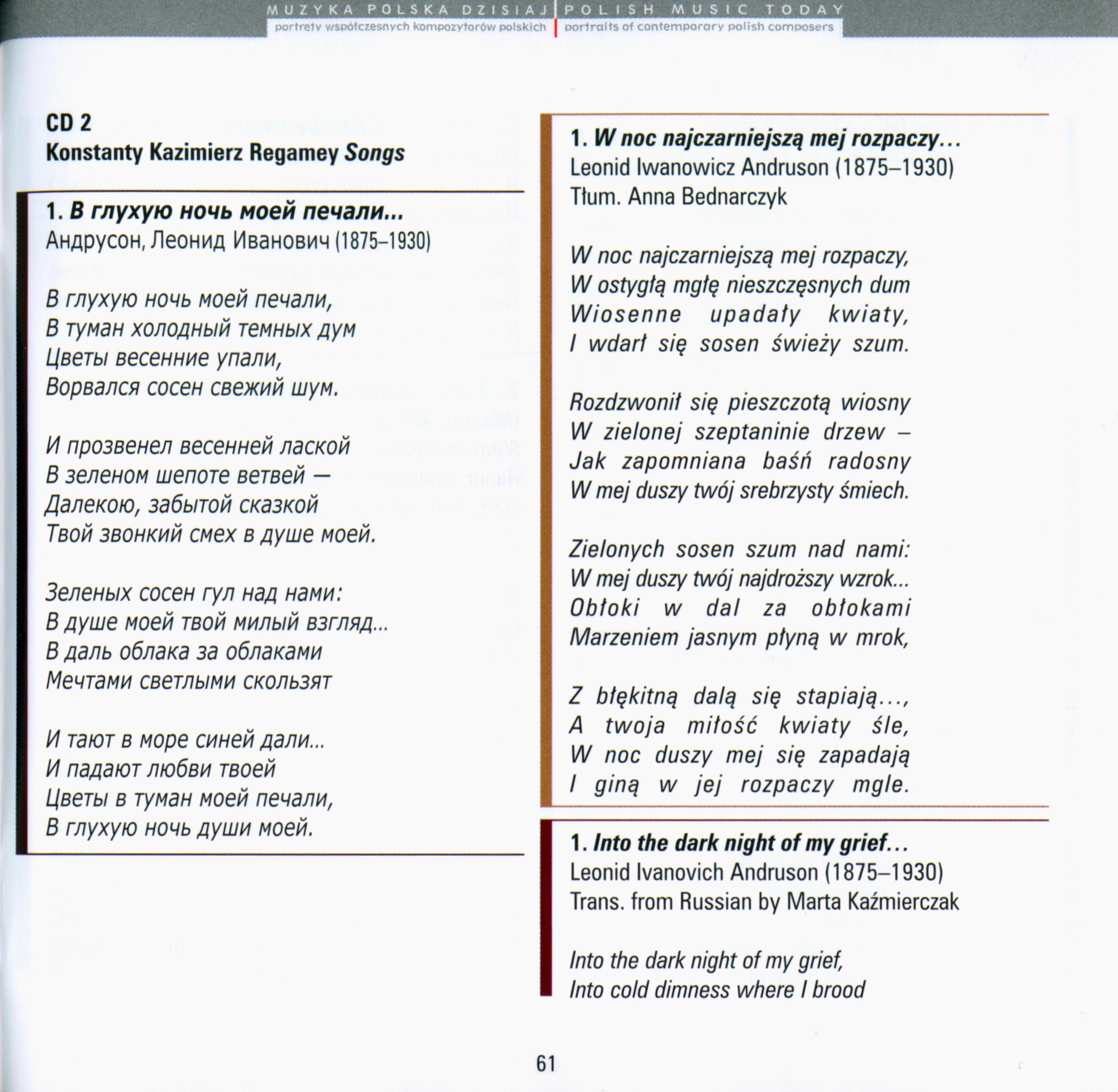
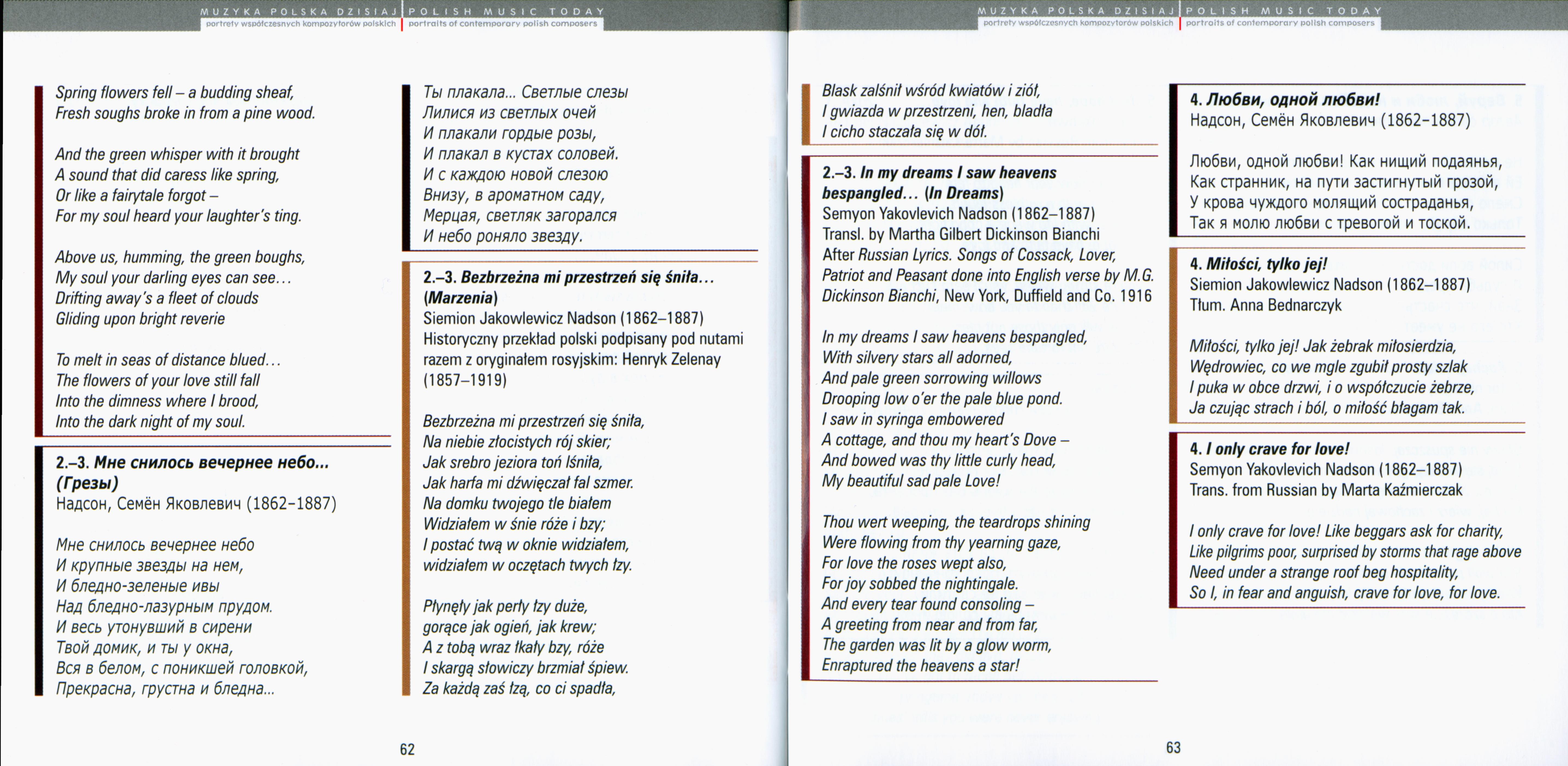
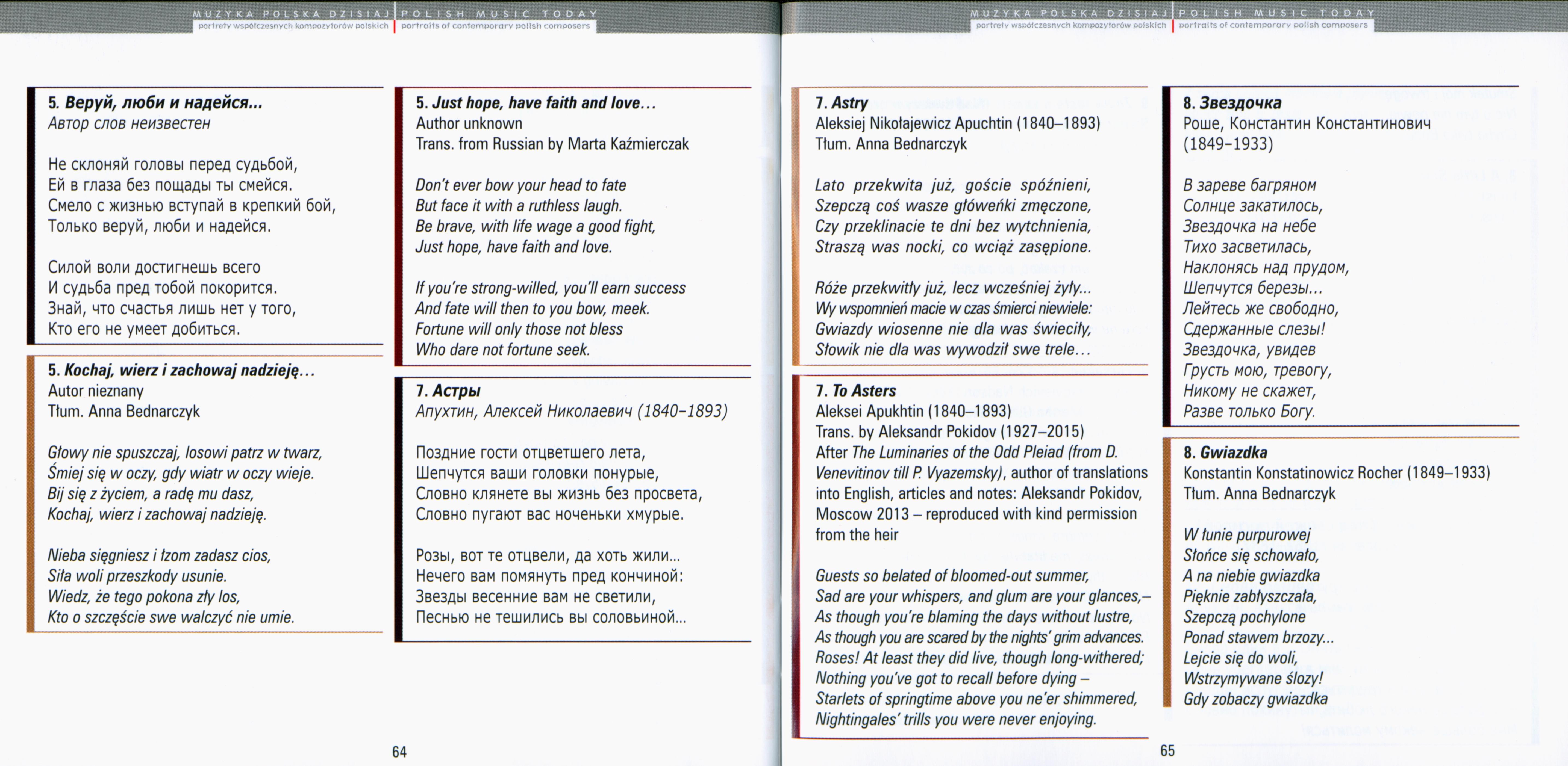
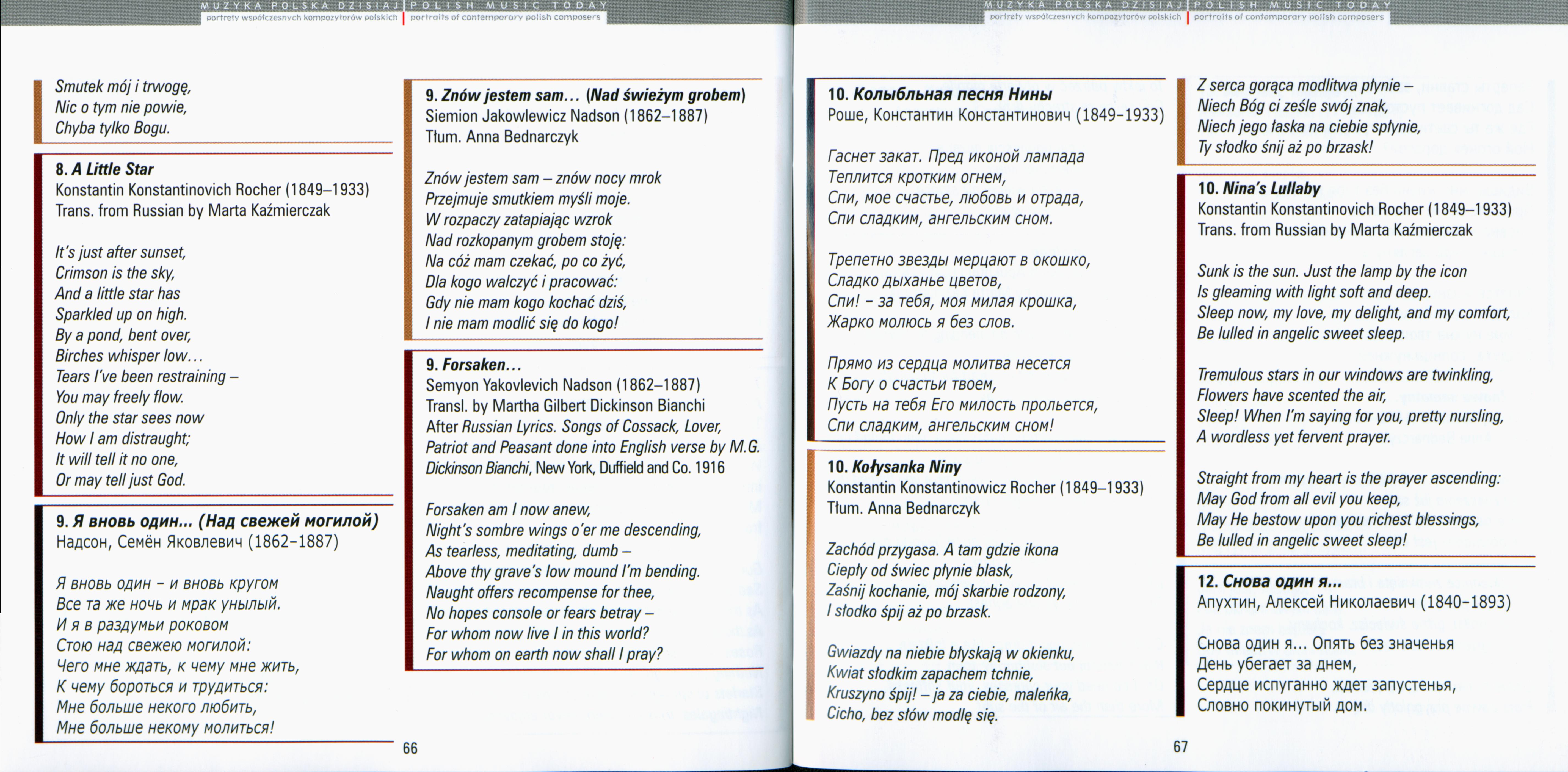
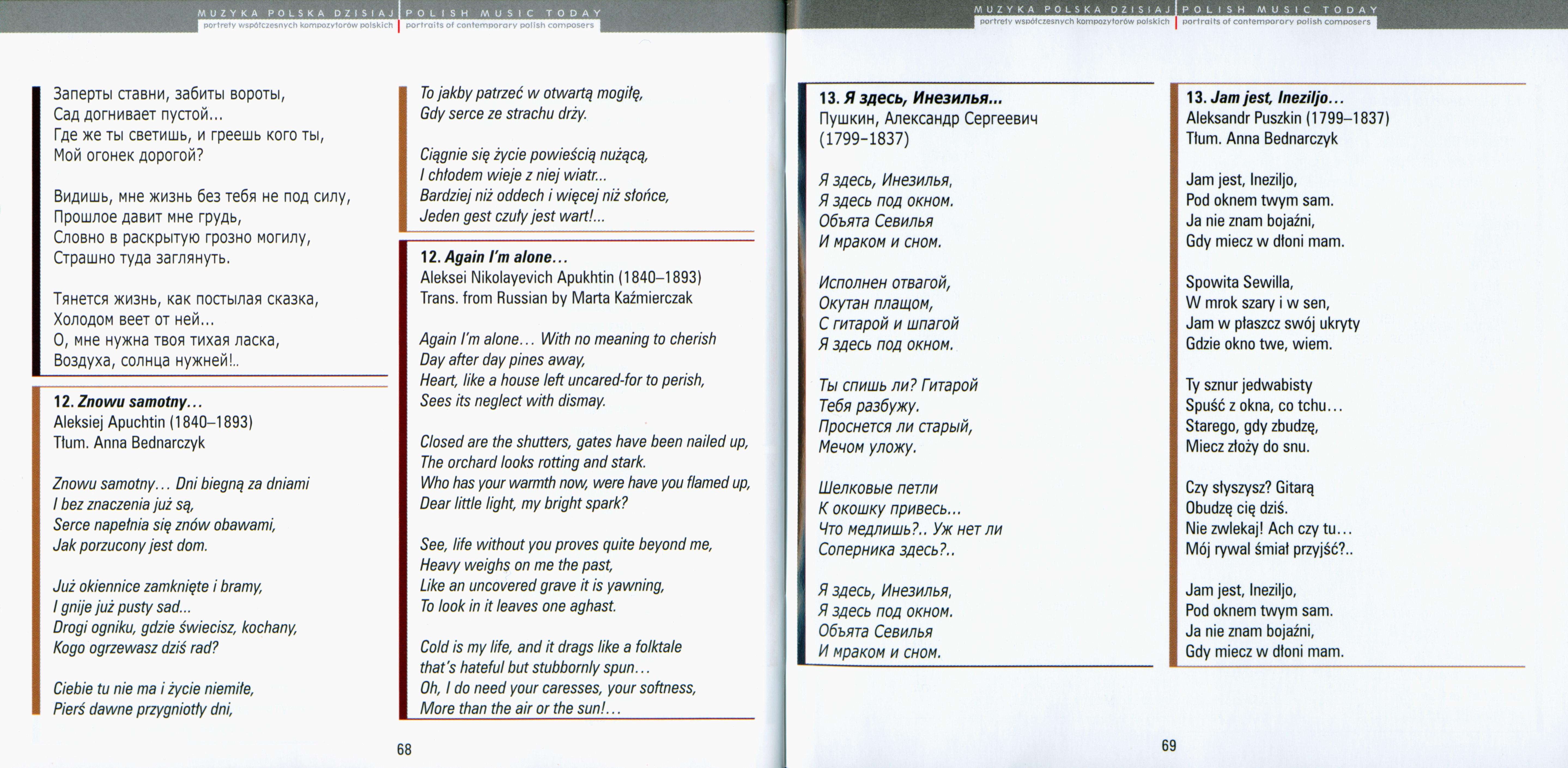
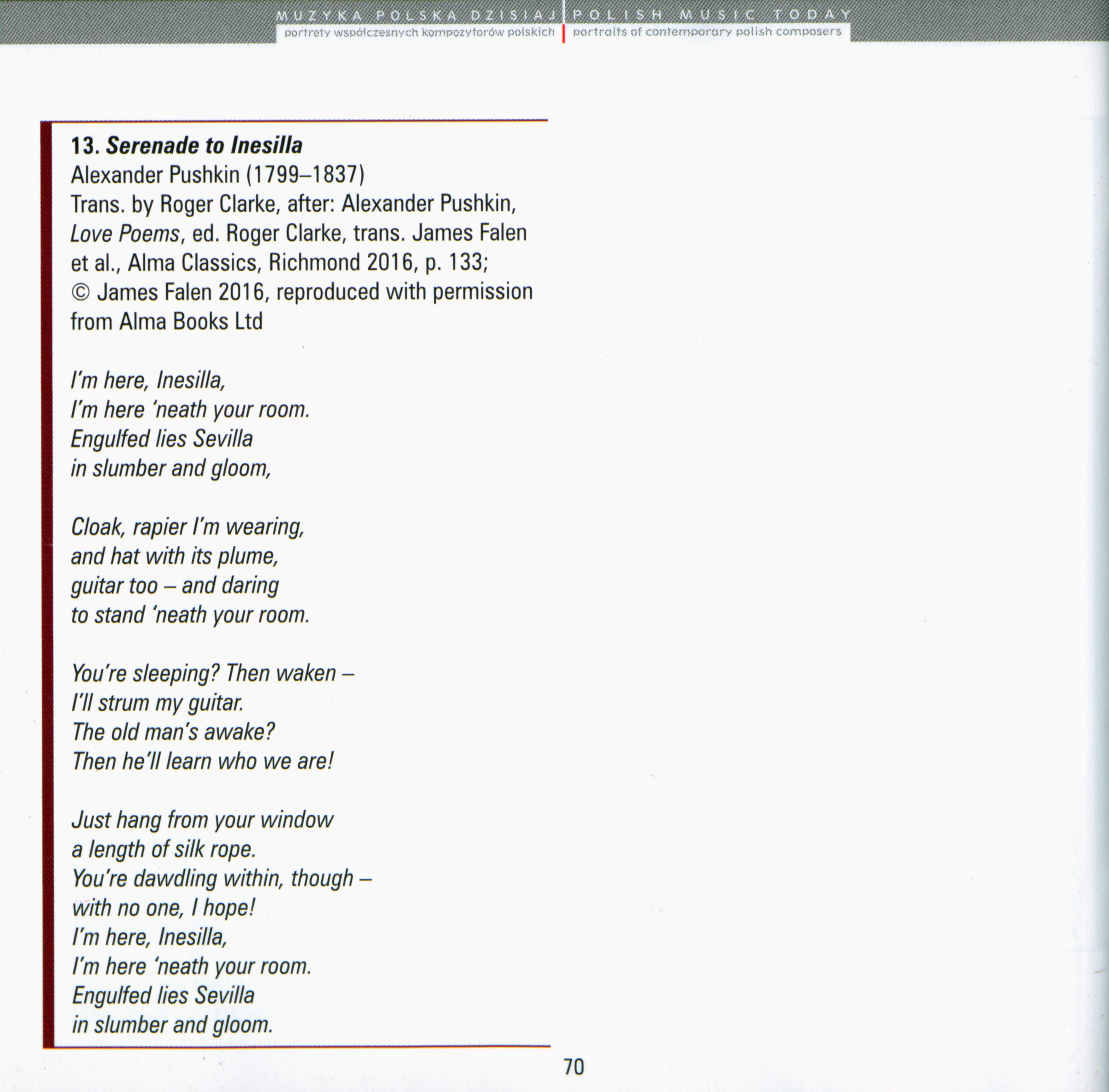
Piano works
The two piano miniatures included in between the songs are graceful examples of lyrical salon miniatures. Like the songs, they were printed by G.I. Indzhishek. The nostalgic Chanson triste was dedicated to the already mentioned ‘Mme Simanowsky’, young Konstanty’s godmother (the baptism was held in Kiev’s oldest Orthodox church, Desyatynna). Improvisation is of a rather meditative character, with a meandering melodic theme in place of the virtuosic displays that one might expect.
Jerzy Stankiewicz ‘Two Regameys...
Listen to:
(perf. by Natalia Pasiecznik)
Chanson Triste:
Improvisation:
Impression Chanson Triste with Jevhen Gromov - piano:
Piano Concerto F-sharp minor
Listen to:
(perf. by Dominika Peszko, Radosław Goździkowski)
Piano Concerto F-sharp minor 1st movement:
It is a composition for two pianos notated on twelve-stave manuscript paper, the second piano part being customarily placed under the first. This is not a piano reduction. The first piano part is coupled with the second piano, whereas orchestral-instrumental entries are only marked at some places. The autonomous second piano part is treated on a par as far as theme development is concerned. It co-forms the two-piano texture. Among the numerous works for two pianos performed in that period, there were some ‘with piano accompaniment’ and others, more elaborate, for two concertante pianos, in which case the two piano parts were entered on separate pairs of staves, each of them – in the treble and the bass clefs. Régamey Sr’s piece belongs to that latter category. The concerto starts Allegro con spirito, followed by Doppio movimento. After the central development section, tension is released in a vast Adagio, leading to the final segment of the first movement (Presto possibile). Movement Two, Andante cantabile, adagio-like in character, is introduced by the second piano. Of the third movement, III Finale – Allegro non troppo, unfortunately only two pages remain (which comprise the opening forty-two bars of this section).
The rediscovered score of Concerto in F-Sharp Minor sheds a new light on the musical output of Konstanty Kazimierz Régamey. Unlike his earlier salon piano pieces, which demonstrate his melodic talent and a gist for small-scale instrumental forms, the concerto, written nearly two decades later, is the work of a mature composer who uses elaborate piano texture on a large scale and does not shun virtuoso effects in the late Romantic tradition. Régamey Sr was, importantly, a piano virtuoso himself. The harmony is much more modern in this concerto. Written in the then popular key of F-sharp minor, the work abounds in chromaticisms, chromatic eight-note chords, and frequent modulations. The dense piano texture, its vast design and harmonic saturation, brings this music stylistically close to young Rachmaninov or even to its dedicatee – Glière. There are distinct stylistic links to Russian music from the first quarter of the twentieth century. It is a great pity that the finale (much of the third movement) has been lost and is unlikely ever to be recovered. Nevertheless, the two fully preserved movements offer a new perspective on the musical output of the Kyiv Régamey, now reaffirmed by a live performance, since several months after its rediscovery the piece received its world premiere at the 23rd International Days of Music by Kraków Composers – on 18 June 2011 at the Krystyna MoszumańskaNazar Concert Hall of Cracow’s Academy of Music. The performers were outstanding young Cracow-based artists Marek Szlezer and Michał Dziad, already experienced concert pianists. Régamey Sr’s concerto was very well received and attracted much interest among the festival audience. People were surprised that such attractive music remains so little known.
Jerzy Stankiewicz, "The Forgotten figure...

